Samoyed (dog) on:
[Wikipedia]
[Google]
[Amazon]
The Samoyed ( or ; , or ) is a breed of  Samoyed dogs are most often white, and can have a brown tint to their double-layer coat which is naturally dirt-repellent. They have been used in expeditions in both
Samoyed dogs are most often white, and can have a brown tint to their double-layer coat which is naturally dirt-repellent. They have been used in expeditions in both
 The progenitor of the Samoyeds was the Nenets Herding Laika, a reindeer herding spitz commonly used throughout northern Siberia, especially the
The progenitor of the Samoyeds was the Nenets Herding Laika, a reindeer herding spitz commonly used throughout northern Siberia, especially the 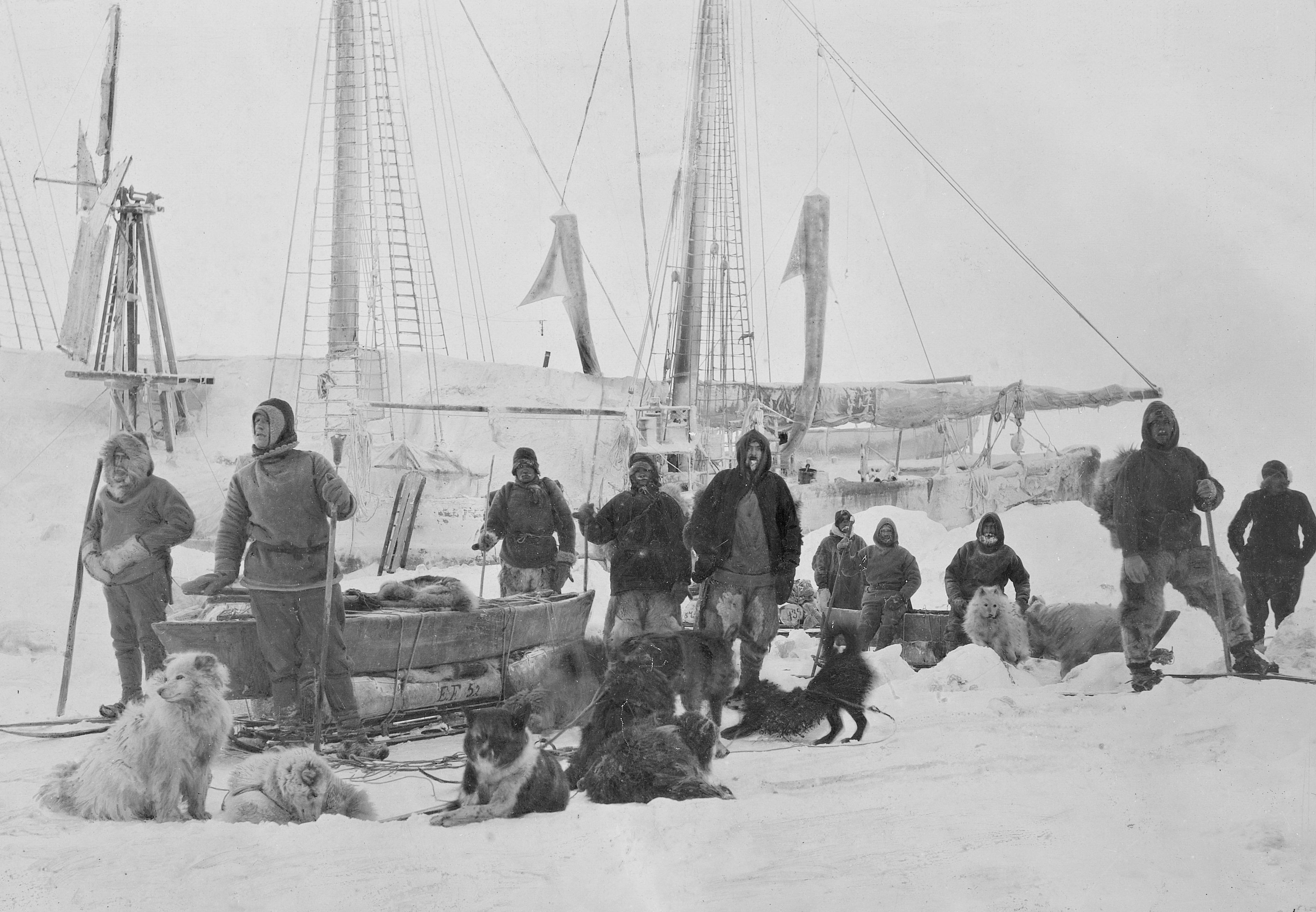 During preparation for the Fram expedition to the North Pole in 1893–1896, 33 dogs were purchased from the Nenets people. While 28 of these dogs would go to the North Pole, none of them survived. The remaining dogs, including pups born during the voyage, were left aboard the ship. In April 1893 the bitch had another litter, most of them white. According to Nansen's notes "...all the dogs were strong, tough and excellent at pulling sleds; they worked very well in hunting Polar bears
During preparation for the Fram expedition to the North Pole in 1893–1896, 33 dogs were purchased from the Nenets people. While 28 of these dogs would go to the North Pole, none of them survived. The remaining dogs, including pups born during the voyage, were left aboard the ship. In April 1893 the bitch had another litter, most of them white. According to Nansen's notes "...all the dogs were strong, tough and excellent at pulling sleds; they worked very well in hunting Polar bears
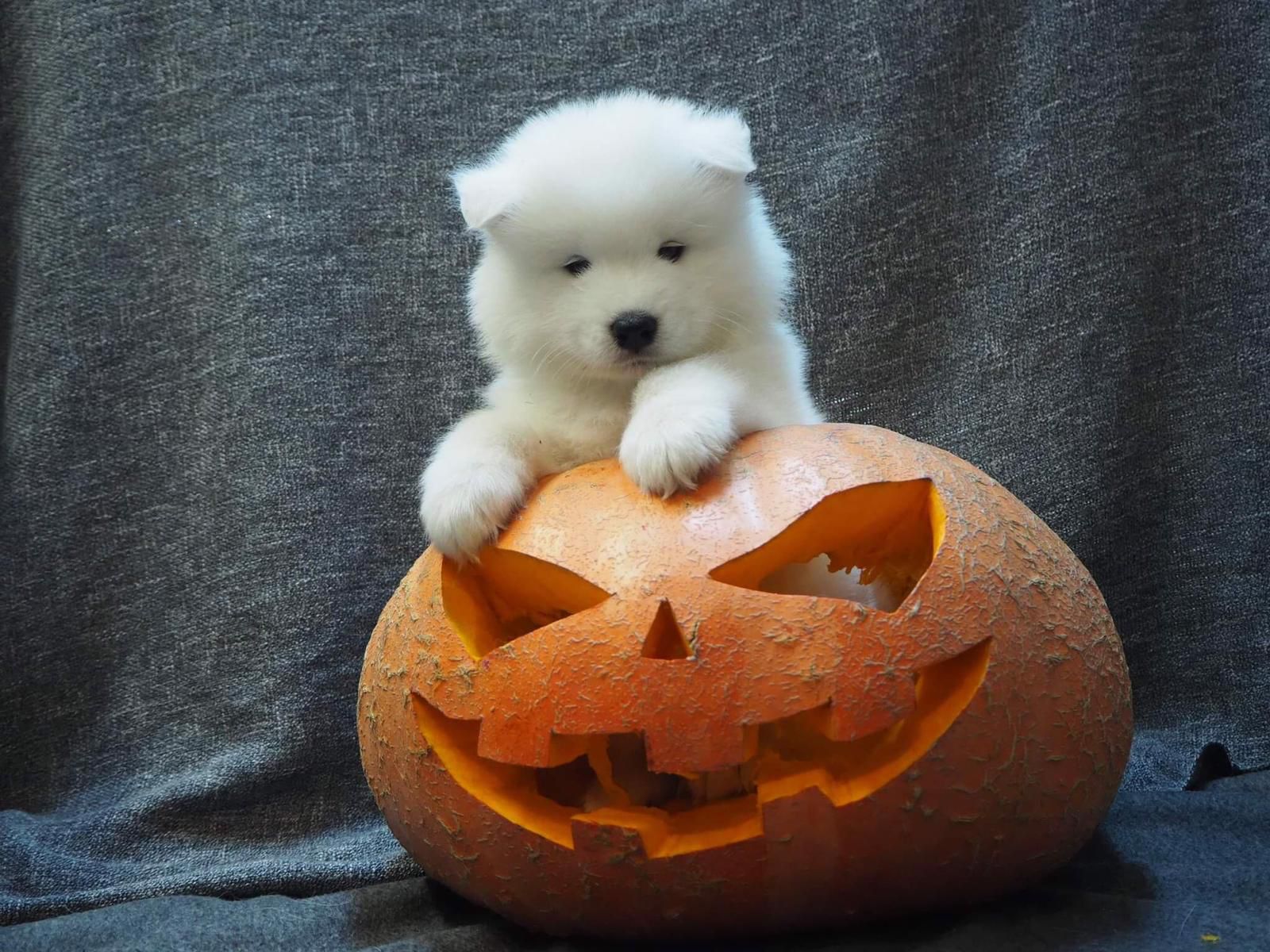 The AKC Standard requires and at the shoulder for males, and and for females. The UK Kennel Club Standard requires for males, and for females.
Samoyed ears are thick and covered with fur, triangular in shape, and erect. They are almost always white but have a light to dark brown tint (known as "biscuit") to a greater or lesser extent. The tint is usually on the ears but can be visible on the whole body.
The AKC Standard requires and at the shoulder for males, and and for females. The UK Kennel Club Standard requires for males, and for females.
Samoyed ears are thick and covered with fur, triangular in shape, and erect. They are almost always white but have a light to dark brown tint (known as "biscuit") to a greater or lesser extent. The tint is usually on the ears but can be visible on the whole body.
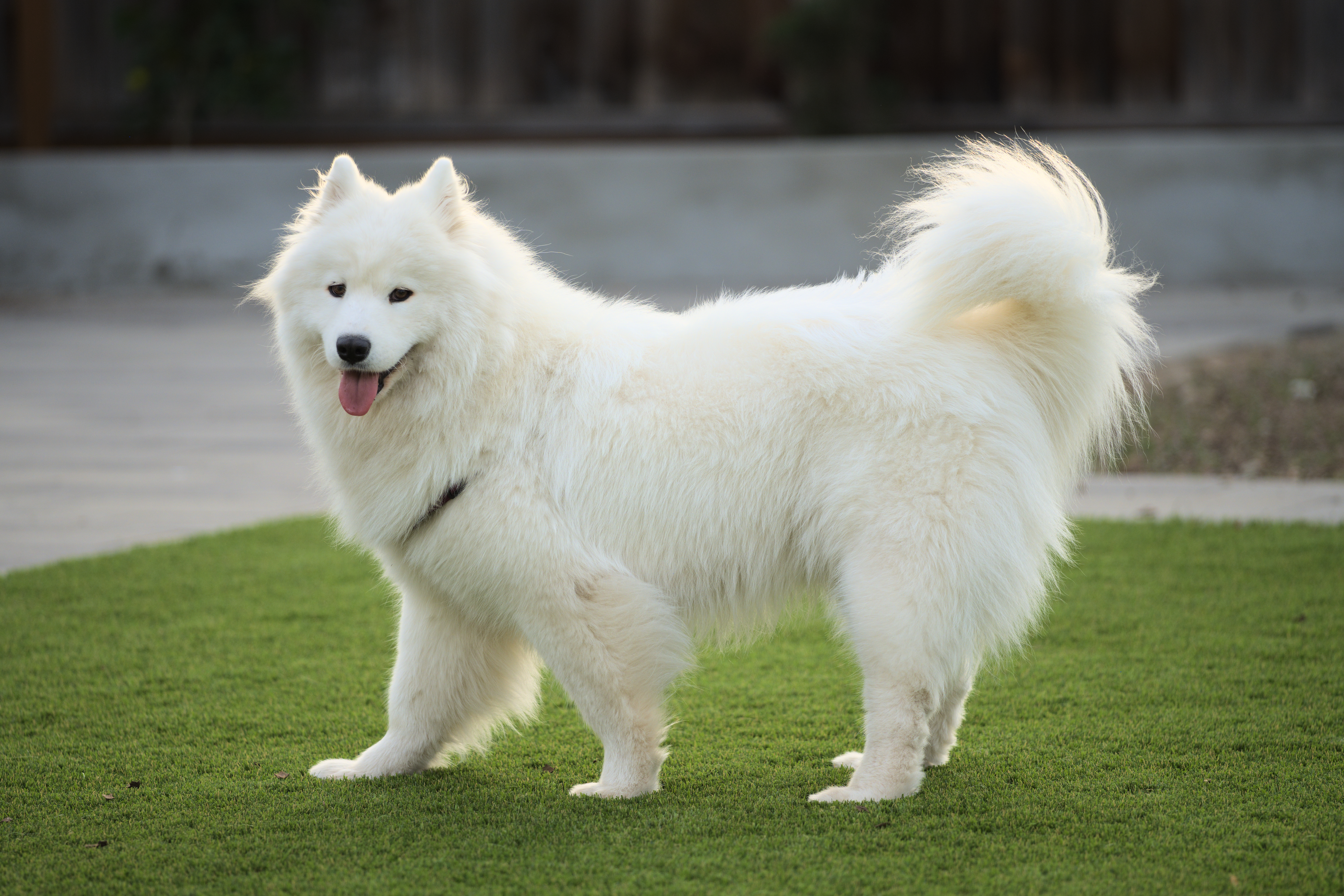 The Samoyed tail is one of the breed's distinguishing features. Like the
The Samoyed tail is one of the breed's distinguishing features. Like the
 Samoyeds' friendly and affable disposition makes them poor guard dogs; an aggressive Samoyed is rare. The breed is characterized by an alert and happy expression which has earned the nicknames "Sammie smile" and "smiley dog". With their tendency to bark, however, they can be diligent watch dogs, barking whenever something approaches their territory. Samoyeds are excellent companions, especially for small children or even other dogs, and they remain playful into old age. According to the Samoyed Club of America, when Samoyeds become bored, they may become destructive or start to dig.
Samoyeds' friendly and affable disposition makes them poor guard dogs; an aggressive Samoyed is rare. The breed is characterized by an alert and happy expression which has earned the nicknames "Sammie smile" and "smiley dog". With their tendency to bark, however, they can be diligent watch dogs, barking whenever something approaches their territory. Samoyeds are excellent companions, especially for small children or even other dogs, and they remain playful into old age. According to the Samoyed Club of America, when Samoyeds become bored, they may become destructive or start to dig.
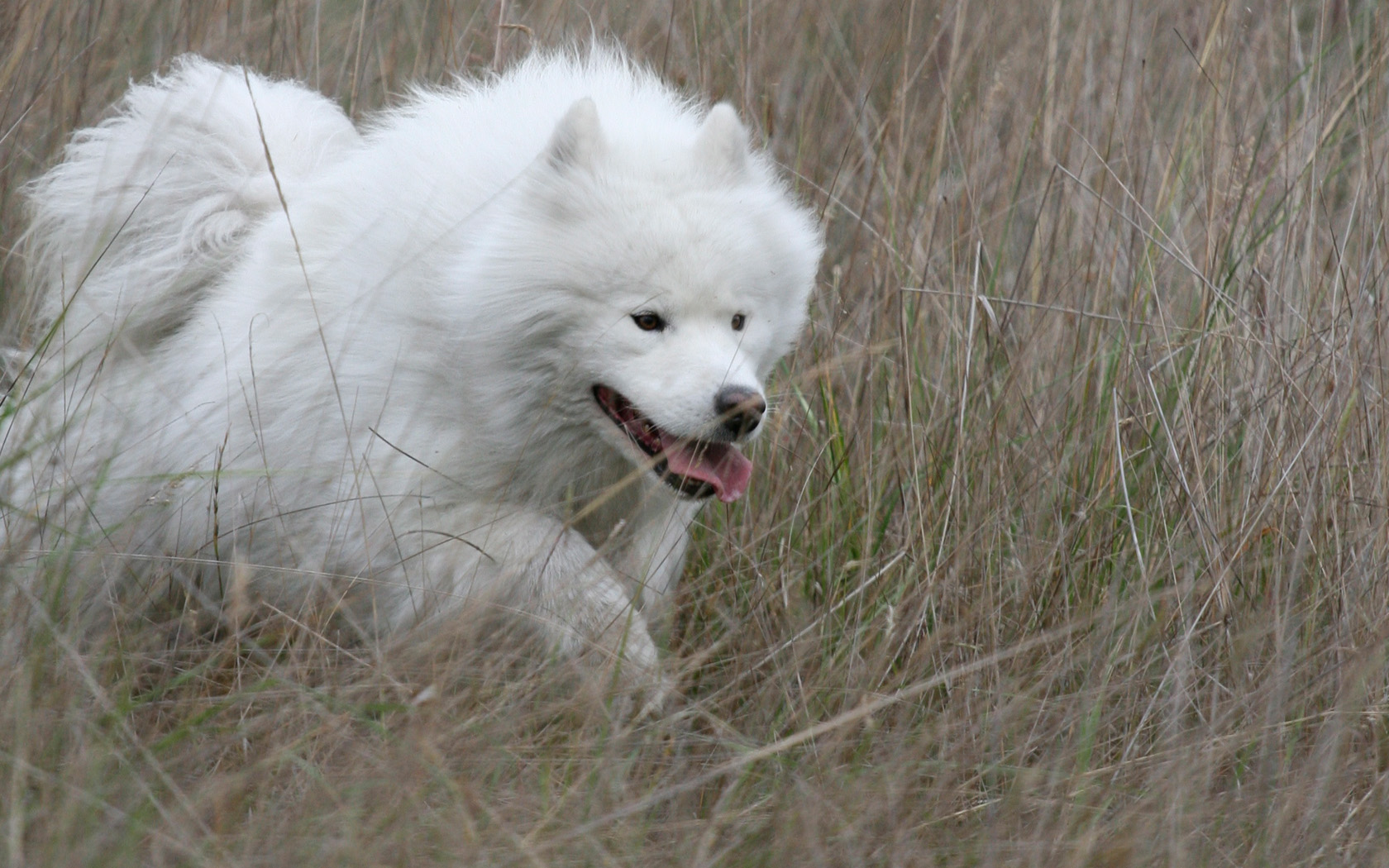 Samoyeds can compete in
Samoyeds can compete in
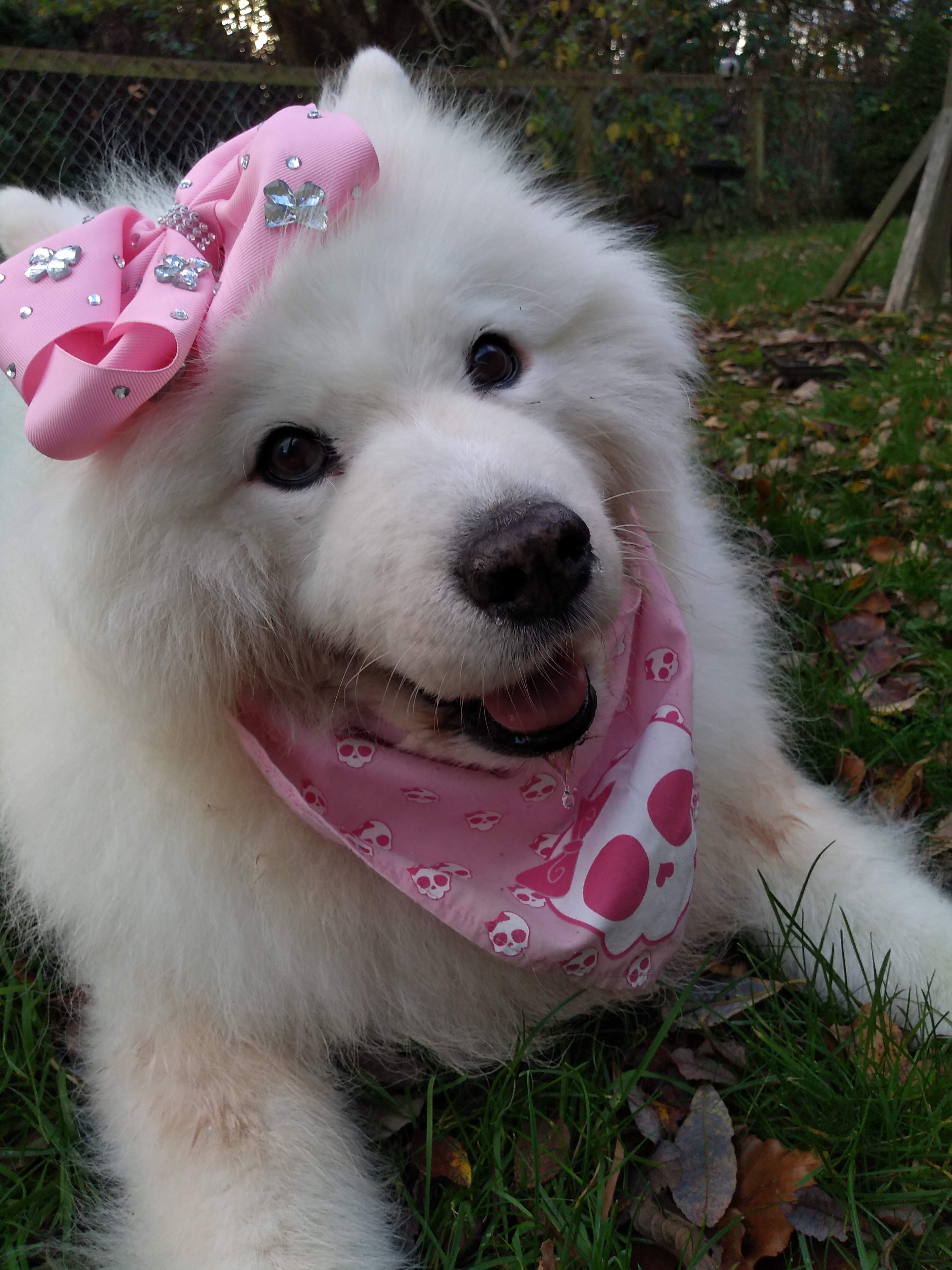 Carrier females do develop mild symptoms after 2–3 months of age, but mostly do not go on to develop
Carrier females do develop mild symptoms after 2–3 months of age, but mostly do not go on to develop
herding dog
A herding dog, also known as a stock dog or working dog, is a Dog type, type of dog that either has been trained in herding livestock or belongs to one of the dog breed, breeds that were developed for herding. A dog specifically trained to he ...
with a thick, white, double-layered coat. They are spitz-type dogs which take their name from the Samoyedic peoples
The Samoyedic peoples (sometimes Samodeic peoples) are a group of closely related peoples who speak Samoyedic languages, which are part of the Uralic family. They are a linguistic, ethnic, and cultural grouping. The name derives from the obsole ...
of Siberia
Siberia ( ; , ) is an extensive geographical region comprising all of North Asia, from the Ural Mountains in the west to the Pacific Ocean in the east. It has formed a part of the sovereign territory of Russia and its predecessor states ...
. Descending from the Nenets Herding Laika, they are domesticated animals that assist in herding, hunting
Hunting is the Human activity, human practice of seeking, pursuing, capturing, and killing wildlife or feral animals. The most common reasons for humans to hunt are to obtain the animal's body for meat and useful animal products (fur/hide (sk ...
, protection and sled-pulling.
 Samoyed dogs are most often white, and can have a brown tint to their double-layer coat which is naturally dirt-repellent. They have been used in expeditions in both
Samoyed dogs are most often white, and can have a brown tint to their double-layer coat which is naturally dirt-repellent. They have been used in expeditions in both Arctic
The Arctic (; . ) is the polar regions of Earth, polar region of Earth that surrounds the North Pole, lying within the Arctic Circle. The Arctic region, from the IERS Reference Meridian travelling east, consists of parts of northern Norway ( ...
and Antarctic
The Antarctic (, ; commonly ) is the polar regions of Earth, polar region of Earth that surrounds the South Pole, lying within the Antarctic Circle. It is antipodes, diametrically opposite of the Arctic region around the North Pole.
The Antar ...
regions, and have a friendly and agreeable disposition.
History
Nenets
The Nenets (; ), in the past also called 'Samoyeds' or 'Yuraks', are a Samoyedic ethnic group native to Arctic Russia, Russian Far North. According to the latest census in 2021, there were 49,646 Nenets in the Russian Federation, most of them l ...
people who were pejoratively referred to as Samoyeds at that time. DNA evidence confirms that Samoyeds are a basal breed that predates the emergence of the modern breeds in the 19th century. A genomic study of two dog specimens that are nearly 100 years old and obtained from the Nenets people
The Nenets (; ), in the past also called 'Samoyeds' or 'Yuraks', are a Samoyedic ethnic group native to Arctic Russia, Russian Far North. According to the latest census in 2021, there were 49,646 Nenets in the Russian Federation, most of them l ...
on the Yamal Peninsula
The Yamal Peninsula () is located in the Yamalo-Nenets Autonomous Okrug of northwest Siberia, Russia. It extends roughly 700 km (435 mi) and is bordered principally by the Kara Sea and its Baydaratskaya Bay on the west, and by the G ...
found that these are related to two specimens dated 2,000 years old and 850 years old, which suggests continuity of the lineage in this region. The two 100 year old dogs were closely related with the Samoyed breed, which indicates that the ancient arctic lineage lives on in the modern Samoyed dog.
 During preparation for the Fram expedition to the North Pole in 1893–1896, 33 dogs were purchased from the Nenets people. While 28 of these dogs would go to the North Pole, none of them survived. The remaining dogs, including pups born during the voyage, were left aboard the ship. In April 1893 the bitch had another litter, most of them white. According to Nansen's notes "...all the dogs were strong, tough and excellent at pulling sleds; they worked very well in hunting Polar bears
During preparation for the Fram expedition to the North Pole in 1893–1896, 33 dogs were purchased from the Nenets people. While 28 of these dogs would go to the North Pole, none of them survived. The remaining dogs, including pups born during the voyage, were left aboard the ship. In April 1893 the bitch had another litter, most of them white. According to Nansen's notes "...all the dogs were strong, tough and excellent at pulling sleds; they worked very well in hunting Polar bears s well
S, or s, is the nineteenth Letter (alphabet), letter of the Latin alphabet, used in the English alphabet, the alphabets of other western Languages of Europe, European languages and other latin alphabets worldwide. Its name in English is Eng ...
" These dogs would become the original Samoyeds.
British Zoologist Ernest Kilburn-Scott is widely considered the founder of Samoyed breed. In 1889, he returned to England with a puppy he had purchased from a Samoyed encampment near Arkhangelsk
Arkhangelsk (, ) is a types of inhabited localities in Russia, city and the administrative center of Arkhangelsk Oblast, Russia. It lies on both banks of the Northern Dvina near its mouth into the White Sea. The city spreads for over along the ...
. In the early days, imported dogs were a wide array of colors. However, it was widely believed that the "true Samoyeds," as originally bred in Siberia, were predominantly white. In 1909, the first official breed standard for the Samoyed was developed in England.
In 1898–1900, Carsten Borchgrevink brought 90 Samoyeds to the southern hemisphere during the ''Southern Cross'' Expedition. In his book "To the South Polar Regions," expedition member Louis Bernacchi
Louis Charles Bernacchi (8 November 1876 – 24 April 1942) was an Australian physicist and astronomer best known for his role in several Antarctic expeditions.
Early life
Bernacchi was born in Belgium on 8 November 1876 to Italian paren ...
wrote:
On the return trip, the dogs were left on Native Island, New Zealand. Due to quarantine requirements, many of the dogs were killed but a few remained. 9 of the remaining dogs were bought by Ernest Shackleton
Sir Ernest Henry Shackleton (15 February 1874 – 5 January 1922) was an Anglo-Irish Antarctic explorer who led three British expeditions to the Antarctic. He was one of the principal figures of the period known as the Heroic Age of Antarcti ...
.
Robert Falcon Scott
Captain Robert Falcon Scott (6 June 1868 – ) was a British Royal Navy officer and explorer who led two expeditions to the Antarctic regions: the Discovery Expedition, ''Discovery'' expedition of 1901–04 and the Terra Nova Expedition ...
brought twenty Samoyeds with him during his 1902 journey. The dogs struggled under the conditions Scott placed them in, with four dogs pulling heavily loaded sleds through 45 cm (18 in) of snow with bleeding feet. Scott blamed their failure on rotten dried fish.
Appearance and characteristics
 The AKC Standard requires and at the shoulder for males, and and for females. The UK Kennel Club Standard requires for males, and for females.
Samoyed ears are thick and covered with fur, triangular in shape, and erect. They are almost always white but have a light to dark brown tint (known as "biscuit") to a greater or lesser extent. The tint is usually on the ears but can be visible on the whole body.
The AKC Standard requires and at the shoulder for males, and and for females. The UK Kennel Club Standard requires for males, and for females.
Samoyed ears are thick and covered with fur, triangular in shape, and erect. They are almost always white but have a light to dark brown tint (known as "biscuit") to a greater or lesser extent. The tint is usually on the ears but can be visible on the whole body.
 The Samoyed tail is one of the breed's distinguishing features. Like the
The Samoyed tail is one of the breed's distinguishing features. Like the Alaskan Malamute
The Alaskan Malamute () is a large breed of dog that was originally bred for its strength and endurance, to haul heavy freight as a sled dog. It is similar to other arctic breeds such as the husky, the spitz, the Greenland Dog, Canadian Eski ...
, the tail is carried curled over the back; however, unlike the Alaskan Malamute, the Samoyed tail is held actually touching the back. It is not usually held in a tight curl, or held flag-like; it is usually carried lying over the back and to one side. In cold weather, Samoyeds may sleep with their tails over their noses to provide additional warmth. Almost all Samoyeds will allow their tails to fall when they are relaxed and at ease, as when being stroked or while eating, but will return their tails to a curl when more alert.
Samoyeds have a dense, double layer coat. The topcoat contains long, coarse, and straight guard hair
Guard hair or overhair is the outer layer of hair of most mammals, which overlay the fur. Guard hairs are long and coarse and protect the rest of the pelage (fur) from abrasion and frequently from moisture. They are visible on the surface of the ...
s, which appear white but have a hint of silver coloring. This top layer keeps the undercoat relatively clean and free of debris. The under layer, or undercoat, consists of a dense, soft, and short fur that keeps the dog warm. The undercoat typically sheds heavily once or twice a year, and this seasonal process is sometimes referred to as "blowing coat". This does not mean the Samoyed will shed only during that time however; fine hairs (versus the dense clumps shed during seasonal shedding) will be shed all year round, and have a tendency to stick to cloth and float in the air. The standard Samoyed may come in a mixture of biscuit and white coloring, although pure white and all biscuit dogs are common. Males typically have larger ruffs than females. While this breed is touted as "hypoallergenic", it does shed a fair amount and needs frequent grooming. While the breed may produce fewer allergens, care should be taken for severe allergies.
Shed Samoyed fur is sometimes used as an alternative to wool in knitting
Knitting is a method for production of textile Knitted fabric, fabrics by interlacing yarn loops with loops of the same or other yarns. It is used to create many types of garments. Knitting may be done Hand knitting, by hand or Knitting machi ...
, with a texture similar to angora. The fur is sometimes also used for the creation of artificial flies for fly fishing
Fly fishing is an angling technique that uses an ultra-lightweight lure called an artificial fly, which typically mimics small invertebrates such as flying and aquatic insects to attract and catch fish. Because the mass of the fly lure is in ...
.
Life expectancy for the breed is about 12–13 years.
Temperament
 Samoyeds' friendly and affable disposition makes them poor guard dogs; an aggressive Samoyed is rare. The breed is characterized by an alert and happy expression which has earned the nicknames "Sammie smile" and "smiley dog". With their tendency to bark, however, they can be diligent watch dogs, barking whenever something approaches their territory. Samoyeds are excellent companions, especially for small children or even other dogs, and they remain playful into old age. According to the Samoyed Club of America, when Samoyeds become bored, they may become destructive or start to dig.
Samoyeds' friendly and affable disposition makes them poor guard dogs; an aggressive Samoyed is rare. The breed is characterized by an alert and happy expression which has earned the nicknames "Sammie smile" and "smiley dog". With their tendency to bark, however, they can be diligent watch dogs, barking whenever something approaches their territory. Samoyeds are excellent companions, especially for small children or even other dogs, and they remain playful into old age. According to the Samoyed Club of America, when Samoyeds become bored, they may become destructive or start to dig.
Activities
 Samoyeds can compete in
Samoyeds can compete in dog agility
Dog agility is a dog sport in which a handler directs a dog through an obstacle course in a race for both time and accuracy. Dogs run off leash with no food or toys as incentives, and the handler can touch neither dog nor obstacles. The handle ...
trials, carting, obedience
Obedience, in human behavior, is a form of "social influence in which a person yields to explicit instructions or orders from an authority figure". Obedience is generally distinguished from compliance, which some authors define as behavior infl ...
, showmanship, flyball
Flyball is a List of dog sports, dog sport in which teams of dogs race against each other from the start to the finish line, over a line of hurdles, to a box that releases a tennis ball to be caught when the dog presses the spring-loaded pad, t ...
, tracking
Tracking may refer to:
Science and technology Computing
* Tracking, in computer graphics, in match moving (insertion of graphics into footage)
* Tracking, composing music with music tracker software
* Eye tracking, measuring the position of ...
, mushing and herding
Herding is the act of bringing individual animals together into a group (herd), maintaining the group, and moving the group from place to place—or any combination of those. Herding can refer either to the process of animals forming herds in ...
events. Herding
Herding is the act of bringing individual animals together into a group (herd), maintaining the group, and moving the group from place to place—or any combination of those. Herding can refer either to the process of animals forming herds in ...
instincts and trainability can be measured at non-competitive herding tests. Samoyeds exhibiting basic herding instincts can be trained to compete in herding trials.
Health
A 2024 UK study found a life expectancy of 13.1 years for the breed compared to an average of 12.7 for purebreeds and 12 for crossbreeds.Samoyed hereditary glomerulopathy
The breed can be affected by a genetic disease known as Samoyed hereditary glomerulopathy, akidney
In humans, the kidneys are two reddish-brown bean-shaped blood-filtering organ (anatomy), organs that are a multilobar, multipapillary form of mammalian kidneys, usually without signs of external lobulation. They are located on the left and rig ...
disease. The disease is known to be caused by an X-linked
Sex linkage describes the sex-specific patterns of inheritance and expression when a gene is present on a sex chromosome (allosome) rather than a non-sex chromosome ( autosome). Genes situated on the X-chromosome are thus termed X-linked, and ...
recessive faulty allele
An allele is a variant of the sequence of nucleotides at a particular location, or Locus (genetics), locus, on a DNA molecule.
Alleles can differ at a single position through Single-nucleotide polymorphism, single nucleotide polymorphisms (SNP), ...
and therefore the disease is more severe in male Samoyeds. Also known as hereditary nephritis
Nephritis is inflammation of the kidneys and may involve the glomeruli, tubules, or interstitial tissue surrounding the glomeruli and tubules. It is one of several different types of nephropathy.
Types
* Glomerulonephritis is inflammation ...
, it is caused by a nonsense mutation
In genetics, a nonsense mutation is a point mutation in a sequence of DNA that results in a ''nonsense codon'', or a premature stop codon in the transcribed mRNA, and leads to a truncated, incomplete, and possibly nonfunctional protein product. No ...
in codon 1027 of the COL4A5 gene on the X chromosome
The X chromosome is one of the two sex chromosomes in many organisms, including mammals, and is found in both males and females. It is a part of the XY sex-determination system and XO sex-determination system. The X chromosome was named for its u ...
(glycine
Glycine (symbol Gly or G; ) is an amino acid that has a single hydrogen atom as its side chain. It is the simplest stable amino acid. Glycine is one of the proteinogenic amino acids. It is encoded by all the codons starting with GG (G ...
to stop codon
In molecular biology, a stop codon (or termination codon) is a codon (nucleotide triplet within messenger RNA) that signals the termination of the translation process of the current protein. Most codons in messenger RNA correspond to the additio ...
), which is similar to Alport's syndrome in humans.
 Carrier females do develop mild symptoms after 2–3 months of age, but mostly do not go on to develop
Carrier females do develop mild symptoms after 2–3 months of age, but mostly do not go on to develop kidney failure
Kidney failure, also known as renal failure or end-stage renal disease (ESRD), is a medical condition in which the kidneys can no longer adequately filter waste products from the blood, functioning at less than 15% of normal levels. Kidney fa ...
. The disease is caused by a defect in the structure of the type-IV collagen fibrils of the glomerular basement membrane
The glomerular basement membrane of the kidney is the basal lamina layer of the glomerulus. The glomerular endothelial cells, the glomerular basement membrane, and the filtration slits between the podocytes perform the filtration function of th ...
. As a consequence, the collagen fibrils of the glomerular basement membrane are unable to form cross-links, so the structural integrity is weakened and the membrane is more susceptible to "wear-and-tear" damage. As the structure of the basement membrane begins to degenerate, plasma proteins are lost in the urine and symptoms begin to appear. Affected males appear healthy for the first three months of life, but then symptoms start to appear and worsen as the disease progresses: the dog becomes lethargic and muscle wastage occurs, as a result of proteinuria
Proteinuria is the presence of excess proteins in the urine. In healthy persons, urine contains very little protein, less than 150 mg/day; an excess is suggestive of illness. Excess protein in the urine often causes the urine to become fo ...
. From three months of age onwards, a reduced glomerular filtration rate
Renal functions include maintaining an acid–base balance; regulating fluid balance; regulating sodium, potassium, and other electrolytes; clearance (medicine), clearing toxins; absorption of glucose, amino acids, and other small molecules; reg ...
is detected, indicative of progressive kidney failure.
Clinically, proteinuria
Proteinuria is the presence of excess proteins in the urine. In healthy persons, urine contains very little protein, less than 150 mg/day; an excess is suggestive of illness. Excess protein in the urine often causes the urine to become fo ...
is found in both sexes from the age of three to four months; in dogs older than this, kidney failure in combination with more or less pronounced hearing loss occurs swiftly and death at the age of 8 to 15 months is expected. In heterozygous
Zygosity (the noun, zygote, is from the Greek "yoked," from "yoke") () is the degree to which both copies of a chromosome or gene have the same genetic sequence. In other words, it is the degree of similarity of the alleles in an organism.
Mos ...
females, the disease develops slowly. The disease can be treated to slow down the development by use of cyclosporine A and ACE inhibitor
Angiotensin-converting-enzyme inhibitors (ACE inhibitors) are a class of medication used primarily for the treatment of high blood pressure and heart failure. This class of medicine works by causing relaxation of blood vessels as well as a decr ...
s, but not stopped.
If a carrier female is mated with a healthy stud dog, the female offspring have a 50% chance of being carriers for the disease, and any male offspring have a 50% chance of being affected by the disease. A genetic test is available for this disease.
Other health concerns
For the Samoyeds several breed-specific hereditary diseases are described in the veterinary literature: *Diabetes mellitus
Diabetes mellitus, commonly known as diabetes, is a group of common endocrine diseases characterized by sustained hyperglycemia, high blood sugar levels. Diabetes is due to either the pancreas not producing enough of the hormone insulin, or th ...
similar but not identical to human Type I (insulin deficiency): The disease occurs in middle-aged Samoyeds, the mean age at diagnosis is seven years. The cause is a chronic inflammation of the pancreas
The pancreas (plural pancreases, or pancreata) is an Organ (anatomy), organ of the Digestion, digestive system and endocrine system of vertebrates. In humans, it is located in the abdominal cavity, abdomen behind the stomach and functions as a ...
and/or autoimmune
In immunology, autoimmunity is the system of immune responses of an organism against its own healthy cells, tissues and other normal body constituents. Any disease resulting from this type of immune response is termed an " autoimmune disease" ...
destruction of the beta cell
Beta cells (β-cells) are specialized endocrine cells located within the pancreatic islets of Langerhans responsible for the production and release of insulin and amylin. Constituting ~50–70% of cells in human islets, beta cells play a vi ...
s of islets of Langerhans
The pancreatic islets or islets of Langerhans are the regions of the pancreas that contain its endocrine (hormone-producing) cells, discovered in 1869 by German pathological anatomist Paul Langerhans. The pancreatic islets constitute 1–2% o ...
. Moreover, autoantibodies
An autoantibody is an antibody (a type of protein) produced by the immune system that is directed against one or more of the individual's own proteins. Many autoimmune diseases (notably lupus erythematosus) are associated with such antibodies.
Pr ...
to insulin were found in affected dogs. Several genetic markers are being discussed as possible causes.
* Progressive retinal atrophy
Progressive retinal atrophy (PRA) is a group of genetic diseases seen in certain breeds of dogs and, more rarely, cats. Similar to retinitis pigmentosa in humans, it is characterized by the bilateral degeneration of the retina, causing progressi ...
(PRA) caused by a frameshift mutation
A frameshift mutation (also called a framing error or a reading frame shift) is a genetic mutation caused by indels ( insertions or deletions) of a number of nucleotides in a DNA sequence that is not divisible by three. Due to the triplet natur ...
in the RPRG locus of the X chromosome. The disease leads to a slowly progressive loss of vision, which eventually leads to blindness. The first symptoms appear between two and five years of age. The disease corresponds to the X-linked PRA type 3 in humans.
* Short legs in conjunction with eye abnormalities: a genetic defect at the COL2A1 locus leads to disproportionate dwarfism due to short limbs in connection with cataracts, malformations of the retina or retinal detachment, liquefaction of the vitreous and a persistent hyaloid artery
The hyaloid artery is a branch of the ophthalmic artery, which is itself a branch of the internal carotid artery. It is contained within the optic stalk of the eye and extends from the optic disc through the vitreous humor to the lens. Usually ...
. The malformations of the retina are dominant (i.e. they occur in heterozygous dogs); the other symptoms are recessive, so that they are expressed only in homozygous dogs. These conditions have no effect on the expression of the protein opticin.
* Pulmonary stenosis occurs more frequently in Samoyeds in comparison with other breeds. The disease can cause shortness of breath, cardiac arrhythmias and rapid fatigue when moving, and increases the risk of congestive heart failure.
* Hip dysplasia is also a concern for Samoyeds.
* The breed can also be affected by sebaceous adenitis, an uncommon idiopathic
An idiopathic disease is any disease with an unknown cause or mechanism of apparent spontaneous origin.
For some medical conditions, one or more causes are somewhat understood, but in a certain percentage of people with the condition, the cause ...
autoimmune skin disease.
See also
*Samoyeds
The Samoyedic peoples (sometimes Samodeic peoples) are a group of closely related peoples who speak Samoyedic languages, which are part of the Uralic languages, Uralic family. They are a linguistic, ethnic, and cultural grouping. The name derive ...
* List of dog breeds
This list of dog breeds includes both Neontology#Extant taxa versus extinct taxa, extant and extinct dog breeds, Designer breed, varieties and dog type, types. A research article on dog genomics published in Science/AAAS defines modern dog breeds ...
References
Further reading
* * *External links
{{Authority control Dog breeds domesticated by Indigenous peoples FCI breeds Sled dogs Spitz breeds Wool animals